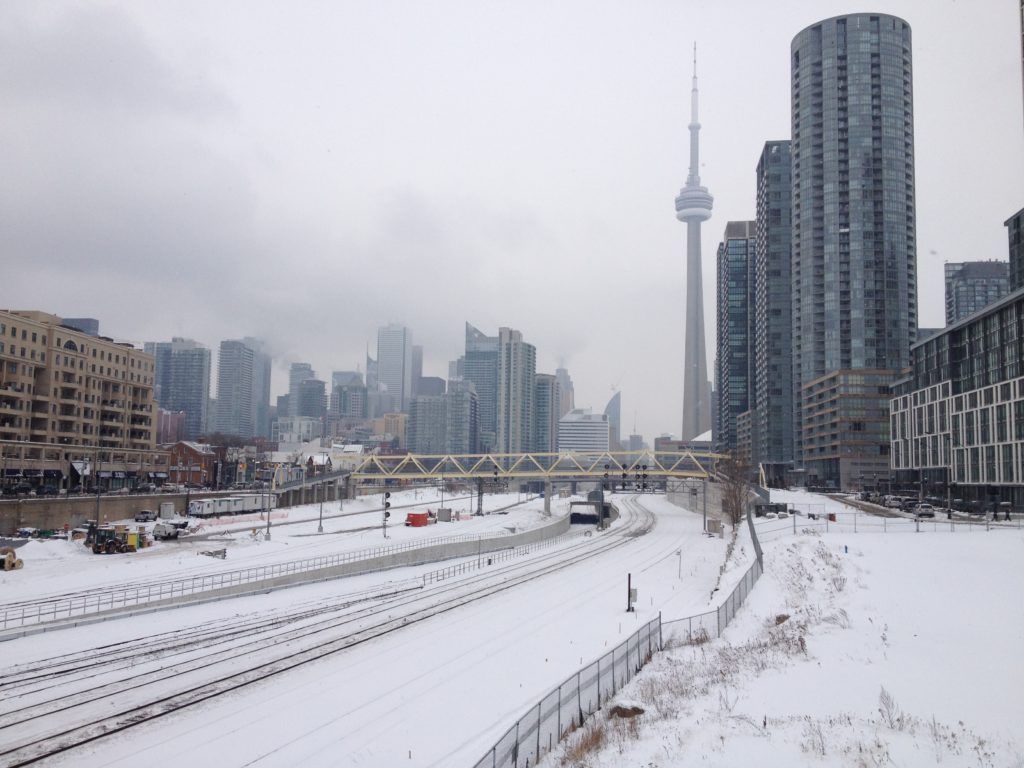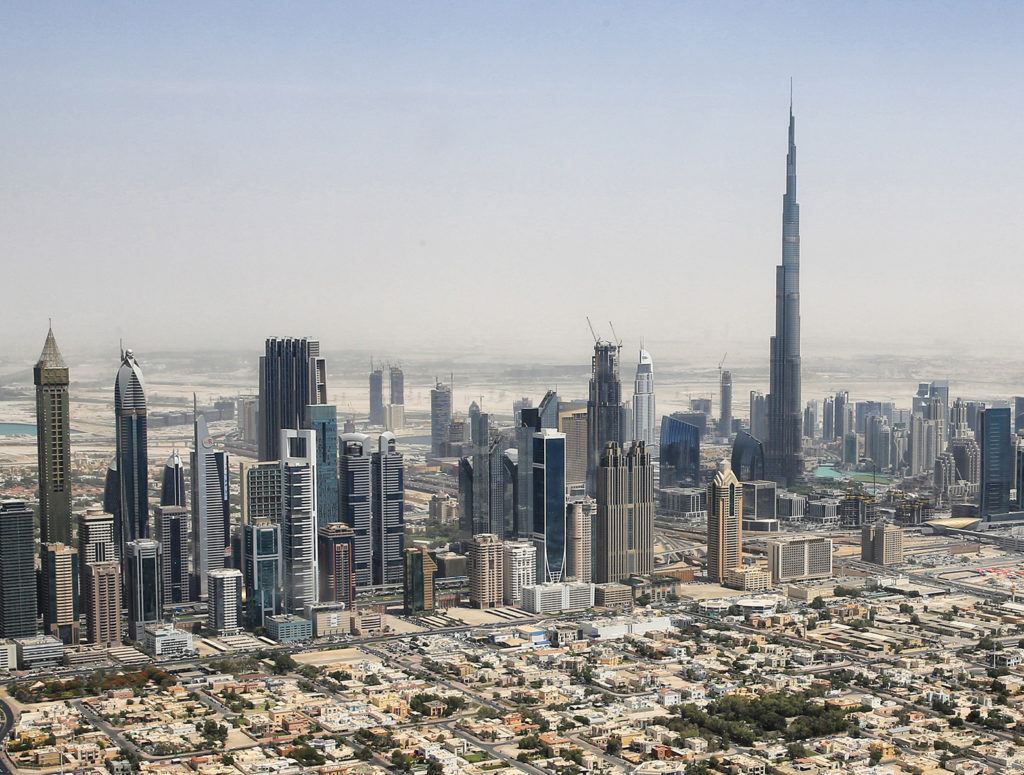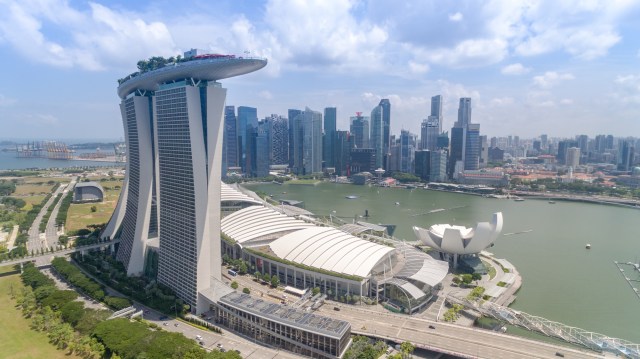Singapore, named ‘the smartest city on Earth’. Credit: Flickr/Google Images

From the heavenly vision of the New Jerusalem and America the Beautiful’s “alabaster cities” to the dystopia of Fritz Lang’s iconic film Metropolis, the idea of the city has long held the human spirit in its mesmeric grip[1. This BBC video captures the human effort to create a perfect city, all the way back to 8,000 years ago. Metropolis]. As people worldwide pour into them from the countryside, the future of the city will be the future of all of us.
And tomorrow’s city will be “smart”.
Home smart home
We’ve already begun to experience what it’s like for our homes to be “smart”. By which we mean connected, computerised, plugged in to the internet.
You can watch your kids (and their nanny) from work on a smart cam – but now the cam can float in the air, follow people around, and of course in the process guarantee security. Your smart doorbell means you can see who’s ringing it. It may recognise familiar faces, enable you to chat with unfamiliar ones, and of course record details[2. Cnet].
From your iPad, or through a voice-activated device like Alexa, you can control pretty much everything in your home. “A Smart Home That Thinks About You,” declares one company offering integrated systems that “bring together your lighting, heating & cooling, security, shades and gate entrance devices”[3. Finite solutions – Bespoke smart home systems. The Independant: 11 best smart phone solutions]. Energy efficiency, sophisticated mood lighting, you name it.
A tale of two (prospective) cities
It’s taking a little time, but the city is getting as smart as your home.
First there are efforts to build whole new smart cities from scratch. Google’s sister company Sidewalk just inked a deal with the city of Toronto to take over a huge slice of waterfront property – 800 acres – and turn it into a 3.3 million square feet of homes and offices.

“They want it to embody the city of the future, a technological test bed for other communities around the world,” wrote Emily Badger in the New York Times; “the world’s first neighborhood built from the internet up.”[4. Emily Badger, New York Times, October 18, 2017: “Google’s Founders Wanted to Shape a City. Toronto Is Their Chance.”] The Google affiliate’s plans show the interlocking character of an urban environment designed to benefit from embedded digital features. They include “a thermal energy grid that would be carbon neutral, sensors that separate waste from recycling, modular buildings that convert from retail to housing, monitors that track noise and pollution, self-driving transit shuttles, shared-ride taxibots, adaptive traffic lights, delivery robots, heated bike paths and sidewalks that melt snow on their own”. In Toronto, that last point is a strong one.
There’s serious thinking behind the gizmos. Sidewalk is deliberately based in New York City rather than Silicon Valley, with former NYC deputy mayor Dan Doctoroff as boss. Rather than design a utopia in thin air, the idea is to blend the new stuff with what we know about the old. “We all collectively see cities as about friction: good friction and bad friction,” Mr Doctoroff told The New York Times. “Good friction is serendipity, it’s opportunity, it’s diversity, it’s seeing 40 different nationalities on the subway as you commute in the morning. Bad friction is congestion, it’s pollution.”
Bill Gates has also jumped into the fray with an $80m investment in a location that won’t have big problems with snow: Phoenix, Arizona. He’s just bought 25,000 acres with a plan for 80,000 homes, together with commercial and other space[5. Thuy Ong, in The Verge for November 14, 2017: “Bill Gates is investing $80 million to build a smart city in Arizona.” More here].
And around the world
At the same time, there are efforts worldwide to retrofit smartness into the dumb cities we know and love.
Among many competing claims, Singapore stands out. A research firm recently crowned the city-state as the “smartest city on earth”[6. Juniper research]. Closer to home, Barcelona was picked as 2015 Global Smart City.
These huge communities are distinguished by their application of digital technology to a series of problems. “While there are many definitions of a smart city, in general a smart city utilises IoT [Internet of Things] sensors, actuators and technology to connect components across the city, and it impacts every layer of a city, from underneath the streets, to the air that citizens are breathing.”

Some of this is obvious to you and me, some is hidden from view: all the way from apps that track the buses – a huge plus for city-dwellers – to “smart grid” functions that are making power supplies safer, more environmentally friendly and more reliable[6. Tech Republic]. Sophisticated lighting in public as well as private saves money and delivers much better illumination (and in many cases safety). Traffic lights no longer work on timers but adjust to traffic patterns.
Or to take two very practical examples from London. Drivers in London typically cruise for 12 minutes before they find somewhere to park, causing pollution, congestion and frustration. The City of Westminster has a smart parking scheme: if you use the app it tells you where spaces are available[7. Smart parking in London]. And if you’re on the bus… on my way in to the UnHerd office this morning a voice advised passengers standing downstairs that there were plenty of seats on the upper deck.
Smart streetlights have been leading the way, both as smart lights (LED) and as easily connected reporting stations for everything from traffic patterns to air quality to crime.
Smart and Happy?
Determined to be top smart city is the city of Dubai, most technologically advanced of all the Gulf states. Partly because of its small size it has been able to implement city-wide initiatives with relative ease – all the way to robot police. It boasts that it “aims to introduce strategic initiatives and develop partnerships to contribute to its Smart Economy, Smart Living, Smart Governance, Smart Environment, Smart People and Smart Mobility dimensions”[8. Smart Dubai].
What’s notable about Dubai is that its smart city initiative is managed in tandem with its plan to make the city the happiest city on earth. It’s making strides with one of the most innovative of smart city efforts – smart bus stops. Bus shelters are all wheelchair accessible, open 24/7, and air-conditioned. They have free mobile charging points and machines for banking and buying airline tickets. You can pay your bills and make gifts to charity. And some of them have coffee and donut machines too. Rather like the way in which lamp-posts are being used, here we have a creative build-out from a standard service that incorporates many more.
Heaven on Earth?
Of course, there are downsides. Data-gathering that cuts crime and helps traffic flow can also intrude on privacy. Connectedness that facilitates parking and power flow through the grid can be hacked. A focus on “happiness” could be a smart way to keep citizens distracted from politics.
But this is just the start. When we start to speculate about the smart city future – the environment in which we shall all be living out our lives – we need to remember how strange and unfamiliar our app-centred lives would have seemed if they featured in a sci-fi story in the 1960s. Ubiquitous computing – internet-powered everything everywhere – is just in its infancy. Big choices lie ahead.
READ MORE
Much info here: Smartcitiescouncil.com
There is a great deal of interest in developing economies in utilising smart city approaches to infrastructure development and service provision. For example, India:
Swanti.com – a century of smart cities
And Africa:
Brookings – Smart city initiative in Africa










Join the discussion
Join like minded readers that support our journalism by becoming a paid subscriber
To join the discussion in the comments, become a paid subscriber.
Join like minded readers that support our journalism, read unlimited articles and enjoy other subscriber-only benefits.
Subscribe